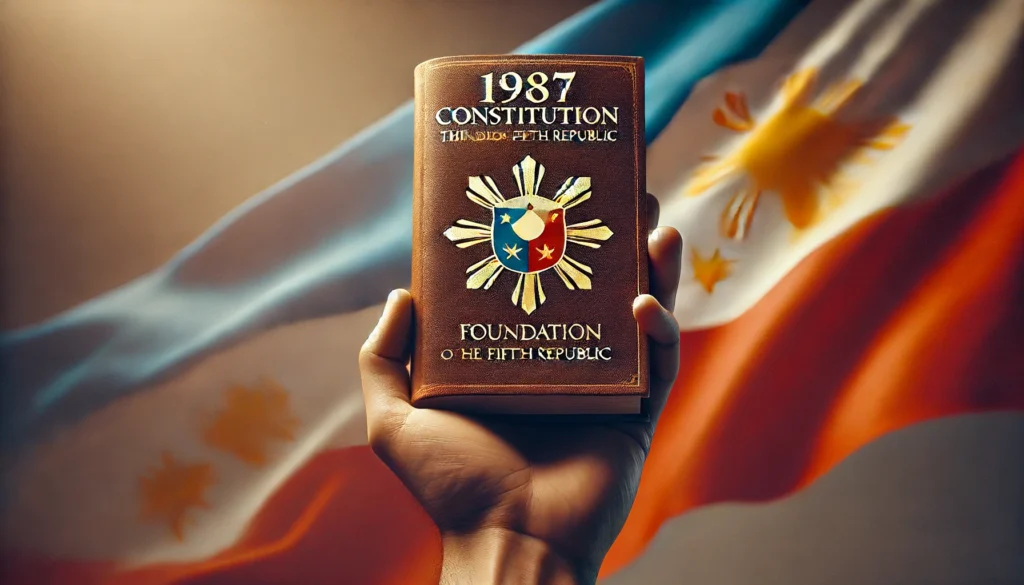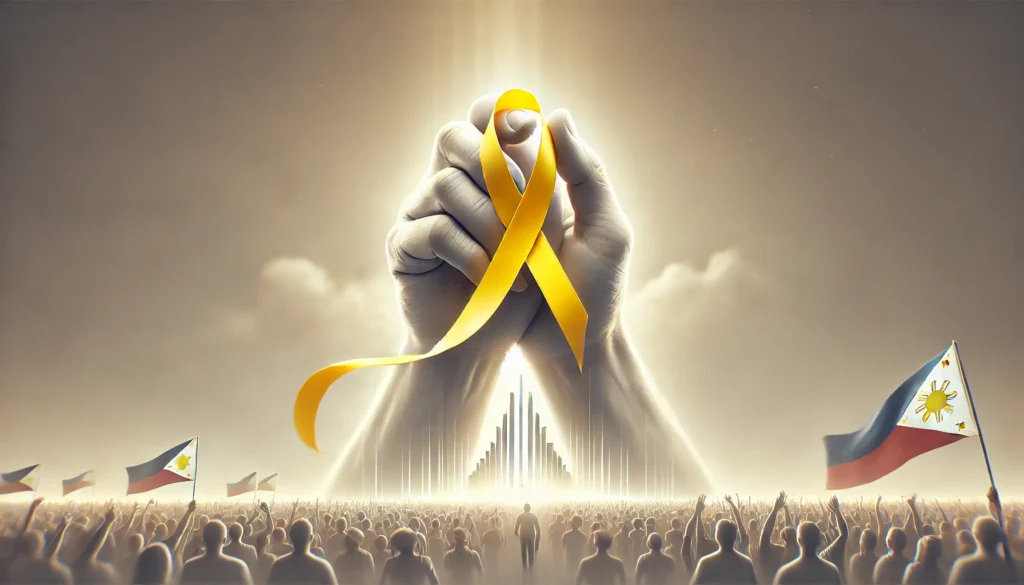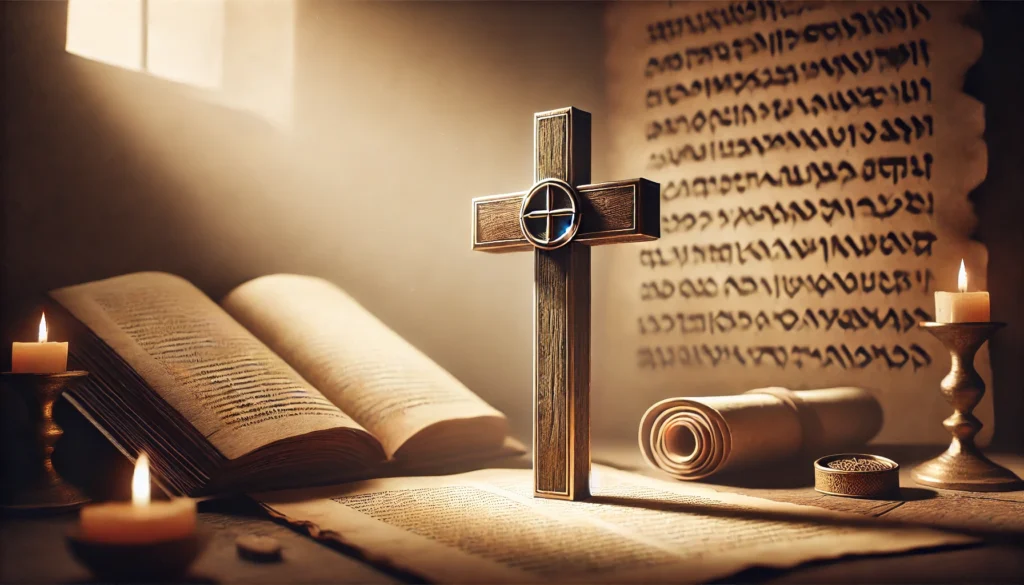The 1987 Constitution of the Philippines, also known as the “Freedom Constitution,” emerged from a turbulent period in Philippine history. It was drafted and ratified following the People Power Revolution of 1986, which ousted Ferdinand Marcos and ended his two-decade rule. This historic document laid the groundwork for the Fifth Republic of the Philippines, marking a new era of democracy and reform.
The Fall of the Marcos Regime
The reign of Ferdinand Marcos, which began in 1965, saw the implementation of martial law in 1972. This period was characterized by:
- Suppression of civil liberties
- Rampant corruption and cronyism
- Economic decline and increasing foreign debt
The assassination of opposition leader Benigno Aquino Jr. in 1983 catalyzed widespread discontent, ultimately leading to the People Power Revolution in February 1986. This peaceful uprising forced Marcos into exile and installed Corazon Aquino as the new president.
The Constitutional Commission
Upon assuming the presidency, Corazon Aquino abolished the 1973 Constitution and appointed a Constitutional Commission to draft a new charter. The commission, composed of 48 members from various sectors of society, was tasked with creating a document that would:
- Restore democratic institutions
- Safeguard against future authoritarianism
- Address the socio-economic challenges facing the nation
The commission worked diligently for five months, from June to October 1986, to produce a draft that reflected the aspirations of the Filipino people for a more just and equitable society.
Key Features of the 1987 Constitution
The 1987 Constitution introduced several innovative features and safeguards designed to prevent the abuses of the past and promote good governance. Here are some of its most significant provisions:
Form of Government
The constitution reaffirmed the Philippines as a democratic and republican state, with a presidential system of government. It established three co-equal branches:
- Executive: Headed by the President, who serves as both head of state and head of government
- Legislative: Bicameral Congress consisting of the Senate and House of Representatives
- Judiciary: Supreme Court and lower courts
Bill of Rights
Article III of the constitution contains an expanded Bill of Rights, which includes:
- Protection of civil liberties
- Safeguards against arbitrary arrest and detention
- Prohibition of torture and secret detention places
- Right to privacy and freedom of expression
Limitations on Presidential Power
To prevent the concentration of power that occurred during the Marcos era, the constitution imposed several restrictions on presidential authority:
- Single six-year term limit for the President
- Requirement of congressional approval for declaring martial law
- Stricter rules on the use of emergency powers
Social Justice and Human Rights
The constitution places strong emphasis on social justice and human rights, mandating the state to:
- Promote comprehensive rural development and agrarian reform
- Protect the rights of indigenous cultural communities
- Advance the role of women in nation-building
- Prioritize education, science, and technology
Economic Provisions
The constitution includes provisions aimed at promoting economic development and protecting national interests:
- Emphasis on a self-reliant and independent national economy
- Restrictions on foreign ownership of land and certain industries
- Promotion of social enterprises and cooperatives
Ratification and Implementation
The draft constitution was submitted to the Filipino people for ratification through a plebiscite held on February 2, 1987. The results were as follows:
| Option | Votes | Percentage |
|---|---|---|
| Yes | 17,059,495 | 76.37% |
| No | 5,058,714 | 22.65% |
| Invalid/Blank | 219,538 | 0.98% |
With an overwhelming majority voting in favor, the 1987 Constitution was officially ratified and came into effect on February 11, 1987.
Transition to the New Constitutional Order
The ratification of the constitution set in motion several key changes:
- The bicameral Congress was restored, with elections held in May 1987
- Local government elections were conducted to fill positions at all levels
- The Supreme Court was reorganized, with new justices appointed
These steps marked the formal transition from the revolutionary government of President Aquino to the constitutional democracy of the Fifth Republic.
Impact and Legacy
The 1987 Constitution has had a profound and lasting impact on Philippine governance and society. Its legacy can be observed in various aspects of national life:
Strengthened Democratic Institutions
- Regular elections at all levels of government
- Vibrant multi-party system and civil society
- Enhanced checks and balances among branches of government
Human Rights and Civil Liberties
- Creation of the Commission on Human Rights
- Greater press freedom and civil society participation
- Improved legal protections for marginalized groups
Decentralization and Local Autonomy
The Local Government Code of 1991, mandated by the constitution, devolved significant powers to local government units, promoting:
- More responsive and accountable local governance
- Increased community participation in development planning
- Improved delivery of basic services at the grassroots level
Challenges and Criticisms
Despite its many positive contributions, the 1987 Constitution has faced criticisms and challenges:
- Economic restrictions seen as hindering foreign investment and growth
- Political dynasty provisions perceived as ineffective
- Debates over federalism and potential constitutional amendments
Constitutional Amendments and Reform Efforts
Since its ratification, there have been numerous attempts to amend or revise the 1987 Constitution. These efforts have been driven by various motivations, including:
- Addressing perceived weaknesses in the charter
- Adapting to changing economic and political realities
- Pursuing specific policy agendas of different administrations
Notable Reform Initiatives
- Ramos Administration (1992-1998): Pushed for economic amendments to liberalize certain industries
- Estrada Administration (1998-2001): Proposed changes to lift restrictions on foreign ownership
- Arroyo Administration (2001-2010): Attempted to shift to a parliamentary system through “Charter Change”
- Duterte Administration (2016-2022): Advocated for a federal system of government
While these initiatives generated significant public debate, none has succeeded in altering the fundamental structure of the 1987 Constitution as of 2023.
The Constitution and Modern Challenges
As the Philippines continues to evolve, the 1987 Constitution faces new challenges in addressing contemporary issues:
Technological Advancements
- Privacy concerns in the digital age
- Regulation of social media and its impact on elections
- Cybersecurity and protection of national interests
Environmental Protection
- Balancing economic development with environmental conservation
- Addressing climate change and natural disasters
- Managing the country’s rich but threatened biodiversity
Globalization and Economic Integration
- Adapting to regional economic partnerships (e.g., ASEAN Economic Community)
- Balancing protectionist provisions with the need for foreign investment
- Addressing income inequality and promoting inclusive growth
National Security and Territorial Integrity
- Dealing with external threats and territorial disputes
- Combating terrorism and maintaining internal security
- Balancing civil liberties with national security concerns
Conclusion: The Enduring Relevance of the 1987 Constitution
The 1987 Constitution of the Philippines stands as a testament to the nation’s commitment to democracy, human rights, and social justice. Born out of a period of struggle and hope, it continues to guide the Philippines through the complexities of modern governance and development.
As debates on constitutional reform persist, the document’s core principles remain deeply ingrained in Philippine society. The challenge for future generations lies in preserving these fundamental values while adapting to the evolving needs of a dynamic nation.
The 1987 Constitution, with its strengths and limitations, remains a living document—a framework for governance that reflects the aspirations of the Filipino people for a just, prosperous, and truly democratic society.
Disclaimer: This article aims to provide an accurate and comprehensive overview of the 1987 Philippine Constitution up to 2023. However, constitutional interpretation and implementation are subject to ongoing debates and potential changes. Readers are encouraged to report any inaccuracies or updates to ensure the content remains current and reliable.




